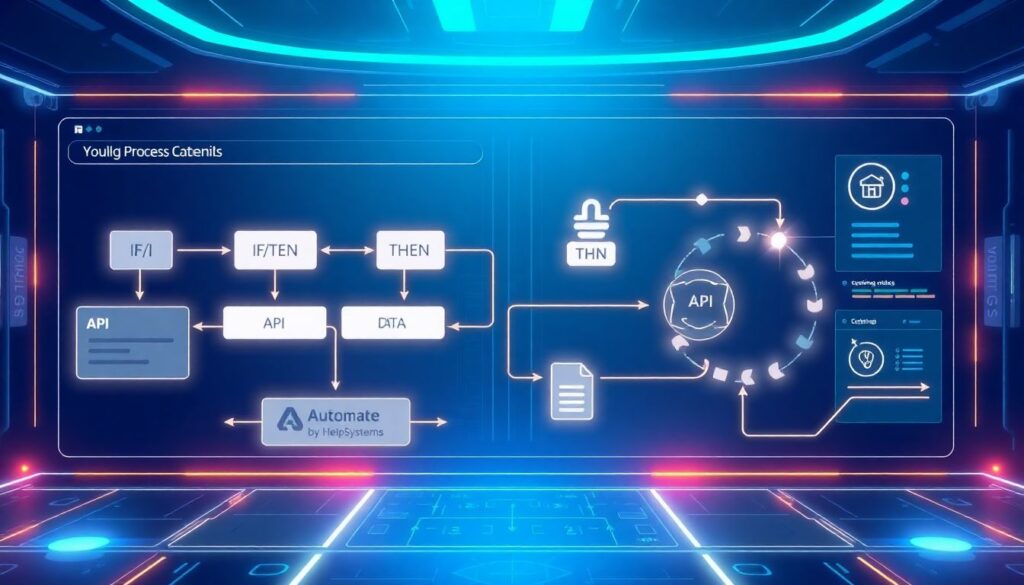Reimagining Automation: Beyond the Obvious with Automate
In the modern digital landscape, automation is no longer a luxury—it’s a necessity. From startups to enterprises, the pressure to reduce overhead and accelerate workflows has led to the rapid adoption of automation tools. But while most businesses use automation for standard operations, the true power of Automate software lies in solving non-obvious challenges and unlocking unseen efficiencies.
Why Most Businesses Miss the Full Potential of Automation
Typical use cases of automate workflow software revolve around reducing manual labor—triggering email sequences, syncing data between apps, or managing calendar events. However, these examples only scratch the surface. In practice, businesses often overlook the less glamorous, repetitive tasks that quietly consume hundreds of person-hours annually. One such example is internal data validation and cross-referencing within siloed systems—something that can be entirely automated with the right integration logic and conditional workflows.
Real-World Example: Automating Legal Document Review
A mid-sized legal firm in Toronto implemented a solution using Automate to scan incoming legal documents, extract key metadata (client names, case numbers, dates), and auto-file them into a cloud-based storage system with advanced tagging. Prior to automation, two paralegals spent 12–15 hours weekly on this monotonous task. After deploying a custom automate workflow software built on OCR and NLP, they cut this time by 90%, freeing up roughly 720 hours annually.
Technical Insight: Automating with Conditional Branching

To automate business processes effectively, advanced automation tools must support conditional branching (IF/THEN logic), API integration, and looping constructs. For example, Automate by HelpSystems allows users to define multiple outcomes of a task based on dynamic variables. A practical setup might use an API call to a CRM, fetch the status of a lead, and based on that status, either trigger a follow-up call task or archive the lead automatically—eliminating human decision-making in routine scenarios.
Going Beyond: Automating Cognitive Workflows

Cognitive automation is the next frontier. Machine learning models integrated into automate business processes are transforming how tasks like invoice matching and fraud detection are handled. For instance, a fintech startup integrated a model that predicts anomalies in transaction sequences. This model feeds results into their automate workflow software, which automatically flags or blocks risky transactions, reducing fraud exposure by 38% within three months.
Uncommon But Powerful Use Case: Automate Email Marketing with NLP
Marketers often rely on traditional automation platforms to trigger campaigns based on form submissions or clicks. However, a Berlin-based SaaS company went a step further. They used an NLP engine to analyze customers’ support chat sentiment in real time. If negative sentiment was detected, the system triggered a custom customer recovery email sequence using automate email marketing tools. Within six weeks, churn in their freemium tier dropped by 11.4%.
Technical Blueprint: Automate Data Entry via Screen Scraping + APIs
Automate data entry is one of the most common applications, especially in industries with legacy systems. A logistics company had to manually move shipping info from one outdated platform to a modern ERP. Using screen scraping combined with the ERP’s REST API, they created an automation flow that extracted structured data from the legacy app’s UI and pushed it via API calls—running 24/7. This not only eliminated manual errors but also reduced data lag to near real time.
How to Identify Hidden Automation Opportunities
One strategy is to perform a “task inventory” week—ask each team member to track every repetitive task they perform daily. Even innocuous actions like renaming files, logging time, or forwarding standard emails can be automated. Combine this with time-tracking analytics, and you’ll often uncover tasks consuming 20–30% of an employee’s productive hours weekly. These can be delegated to automate workflow software with minimal setup.
Building a Culture of Automation-First Thinking
Technological implementation is only part of the equation. To truly automate business processes at scale, organizations must cultivate a mindset where team members constantly ask, “Can this be automated?” Encourage experimentation: allow non-technical employees to create automation flows with low-code tools. One HR department reduced onboarding time by 60% after a non-IT employee built an automated preboarding flow using drag-and-drop automation elements.
Conclusion: Automate Is Not Just About Efficiency—It’s About Innovation

The strategic use of Automate isn’t just about removing tedious chores. It’s about rethinking what roles humans should perform and which can be offloaded to intelligent systems. Businesses that consistently automate repetitive tasks across departments—from marketing to operations—gain compounding advantages: lower costs, faster decision-making, and more agile scaling. The key is to stop thinking of automation as a tool for convenience—and start seeing it as a catalyst for transformation.

